Bone Rank System › Book of Amos › Female Physicians in Ancient Egypt » Origins and History
Articles and Definitions › Contents
- Bone Rank System › Origins
- Book of Amos › Origins
- Female Physicians in Ancient Egypt › Origins
Ancient civilizations › Historical places, and their characters
Bone Rank System › Origins
Definition and Origins

The Bone Rank System ( Golpum or Kolpum ) of ancient Korea was used in the Silla kingdom (57 BCE – 935 CE) in order to signal a person's political rank and social status. Membership of a particular rank within the system was extremely important, permitting a person to apply for certain jobs and deciding how they lived their everyday lives. The rigidity of the system, based as it was on lineage, allowed for very little movement between the classes resulting in a stagnation of talent, which eventually cost the Silla dear.
THE RANKING SYSTEM
The Bone Rank System, so called because it was based on a person's hereditary bloodline, was introduced as part of a new law code in 520 CE by king Beophung (aka Pophung, r. 514-540 CE). This caste system had three main classes: the highest was 'sacred bone' ( seonggol ), then 'true bone' ( jingol ), and finally 'head rank' ( tupum ). The Silla kings, descended from the Pak royal line or their successors the Kims, were all of the sacred bone class. From the mid-7th century CE the sacred bone class was abolished and, thereafter, royalty held the true bone rank along with lesser royals, ministers of high office, and high-level aristocrats.
The head rank class was the largest and itself divided into six subclasses. These were numbered with ordinary people belonging to class one, two, and three. The aristocracy belonged to levels four, five, and six. These top three levels were linked to a person's family ties and/or land they owned, and certain clans dominated the higher positions.
ONLY WOMEN OF THE SACRED BONE RANK COULD WEAR HAIRPINS INLAID WITH JADE OR GEMSTONES.
PRIVILEGES & RESTRICTIONS
Membership of the head rank class was necessary for a person to be considered for civil and military roles in the state apparatus, with the most senior positions reserved for those in the higher numbered subclasses. One's bone rank decided the type of people one could interact with socially, who one could marry, and how much tax had to be paid to the state. Further, membership of a specific level was necessary for a person to enjoy a certain type of housing, not only the size but also decoration as, for example, ceramic roof tiles (instead of thatch) were a very practical and visible badge of rank in Korean society. Bone rank decided which transport people might use, the type of saddle they could sit on, the number of servants they were permitted to have, and even which utensils they could use. Clothes were another visible indicator of social status. Men who were members of the true bone class were not permitted to wear clothes which had embroidery, brocade, or fur, while only women of the sacred bone rank could wear hairpins inlaid with jade or gemstones.
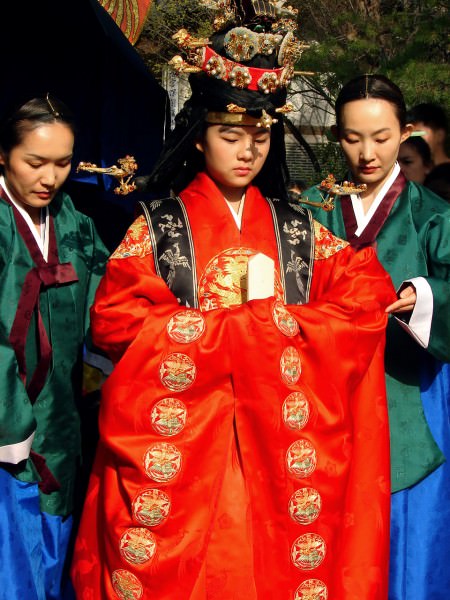
Korean Royal Wedding Re-enactment
SOCIAL IMMOBILITY
Although a particularly appreciated service to the monarch or a senior government official might bring a reward of land and titles, there was, otherwise, not much chance of climbing the social ladder. As the historian K.Pratt notes, "Social mobility was rare, and for most people their occupational and social status was inherited" (79). That is to say, one's birth was by far the most important factor in determining the level one would reach in society as an adult. Even the son of a merchant might expand his father's business considerably, but this new wealth would not have entitled him to access the higher levels of the bone rank system.
The rigidity of the system allowed those who had power to keep it unchallenged, but one of the unfortunate consequences of it was that talent often went unrewarded and the state lost the opportunity to use gifted individuals for the good of all. Indeed, this social stagnation has been cited by many scholars as one of the factors leading to the ultimate downfall of the Silla regime.
This article was made possible with generous support from the British Korean Society.
Book of Amos › Origins
Definition and Origins
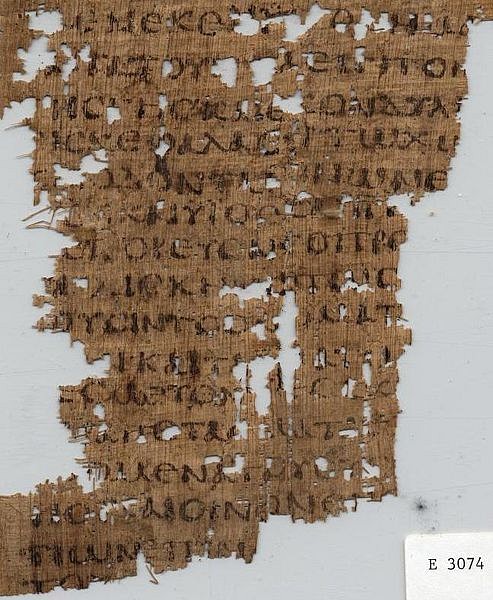
The Book of Amos is a prophetic book of the Hebrew Bible largely dating to the 8th century BCE and considered to be scripture by modern-day Jews and Christians. The work chronicles the visions that the ancient author of this book believed he received from God in order to warn Israel of its impending doom and destruction unless it restores its religious duties to God instead of engaging in the evil and sin that Amos believes has been pervading throughout his country, both in the kingdoms of Israel and in Judah. Naturally, the book also takes place in Israel, as Amos prophesies and preaches to the inhabitants of this land of the judgement of God.
DATING
The Book of Amos is considered one of the earliest biblical books by scholars, as it dates to the middle of the 8th century BCE.Amos informs us that he is writing during the reigns of Jeroboam II and Uzziah, both of whom are biblical kings known from the archaeological record to have reigned from the 8th century BCE. Secondly, Amos states that he is writing two years before a major earthquake (Amos 1.1), an earthquake that has been identified by geologists and known to have devastated Israel somewhere during the middle of the 8th century BCE. Thirdly, in the sixth chapter of Amos (Amos 6.1-2), Amos talks about the destruction of three known ancient cities. These cities are of Calneh, Hamath, and Gath, and are used by Amos to demonstrate to Israel what will happen to them if they do not obey God. The only period in which all three of these cities were destroyed around the same time is c. 900 BCE, and thus Amos was likely writing soon thereafter. According to the scholar Aren Maeir;
It would appear, therefore, that the only viable historical and geopolitical context in which the destruction of Gath, Calneh and Hamath Rabah would be mentioned together would have existed not long after the late 9th century BCE. Later, although Calneh and Hamath continued to be important cities, Gath lost its prominent role.Consequently, one should assume that this passage is to be associated with the original text of the Book of Amos, most consonant with the first half of the 8th century BCE. Attempts to date it to a later stage and to suggest alternative contexts for the reference to these three cities appear to fly in the face of the available historical, biblical, and archaeological evidence (327-328).
STRUCTURE
In the introduction of the book, the author tells us that his name is Amos, as well as that he is a sheep breeder from Tekoa.Interestingly, Tekoa remains a city of Israel to this day. The content of the Book of Amos can be divided into the following structure:
- Introduction (Amos 1.1-2)
- Oracles (1.3-2.6)
- Addressing of Female Samarians (4.1-3)
- Addressing of Rich Samarians (6.1-7)
- Addressing of Rich in Jerusalem (8.4-8)
- Symbolic Visions of Israel's Judgement and Confrontation with Amaziah (7.1-9.8a)
- Epilogue (9.8b-15).
Amos did not believe he was writing in a great time. He believed that he was living in a time of wickedness and he came to the belief that God had given him the duty of preaching to the kingdom of Israel that, if they failed to obey God's commandments and turn themselves from their evil ways, they would be judged by God.
THE MAJORITY OF MODERN SCHOLARS CONSIDER THE GENRE OF THE BOOK OF AMOS TO BE A PROPHETIC BOOK.
Thus, the majority of modern scholars consider the genre of the Book of Amos to be a prophetic book, many even believing that a specified genre that can unify the entire book and its themes to be a 'covenant enforcement document,' where Amos utilized and developed the law of Moses and its stipulations and punishments in forming the structure and form of his book.
BRIEF SUMMARY
The Book of Amos is relatively short, spanning nine chapters. It begins with a very short introduction from Amos himself, in which he names the kings reigning over Israel and Judah in his time, and he proceeds to proclaim that it was God himself who has given him the visions of which he is about to declare to Israel and Judah. After this, Amos begins telling us what his deity, Yahweh, has spoken.
At the start, Yahweh declares that he will punish cities like Damascus, Tyre, Ammon, and many others for their sins. The final two regions that Yahweh speaks against are Israel and Judah themselves, because of their lies, their failure to keep Yahweh's commandments, sexual impurity, and several other abominations that Yahweh proclaimed that they committed.Yahweh chastises Israel and Judah, for even though he had corrected and punished them many times beforehand, they refused to return to Yahweh and own up to their mistakes. Rather, they maintained their impure ways, in spite of God's warnings. Then, Yahweh tells Israel and Judah to abandon their evil ways in favor of good and to begin establishing justice in their lands. Yahweh then describes the destruction of the wicked that will occur on the day of the Lord, the day where the Lord is supposed to enter the Earth and judge it, and thereby proceeds to provide Amos with several visions of how God will bring agony and suffering to the wicked in Israel and Judah.
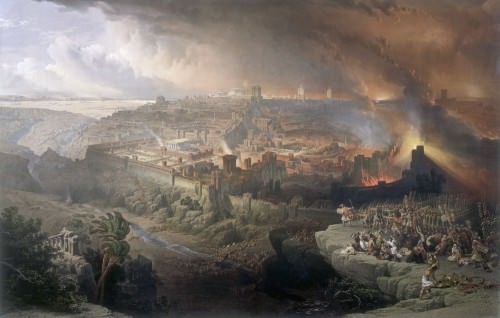
The Siege and Destruction of Jerusalem
All of a sudden, a figure by the name of Amaziah appears, supposedly a priest of Bethel, who begins telling Amos to go off and prophesy elsewhere, as long as he leaves Bethel, the place of the king's sanctuary. Amos rebukes Amaziah for this, telling him that, because he is trying to stop the prophecy directed to him by God, God will reign destruction on both him and his family. In the entire Book of Amos, Amaziah is the only person who speaks other than God's visions to Amos and Amos himself.
"You have lifted up the shrine of your king,
the pedestal of your idols,
the star of your god—
which you made for yourselves.
Therefore I will send you into exile beyond Damascus,”
says the Lord, whose name is God Almighty. (Amos 5.27-28)
After Amos finishes receiving the visions of how Israel will be annihilated, the book ends on a more promising note. After all this comes to pass, God promises to restore Israel to its old and glorious days, alluding to the time of the monarch and famous king, David.
HISTORICAL BACKGROUND
Because the Book of Amos is a prophetic book and not an ancient history, such as ones that were written by the likes of Herodotus and Thucydides, it contains little recorded history to examine as a background for its events.
WE, UNFORTUNATELY, KNOW VERY LITTLE ABOUT AMOS HIMSELF, BESIDES BEING FROM JUDEA & THAT HE IS TODAY CONSIDERED ONE OF THE MINOR PROPHETS.
Throughout the book, we are given the names of a few kings (Jeroboam, Uzziah, David), a few cities and regions (Calneh, Hamath, Ammon, Gath, Tyre, Damascus, Gaza, Edom, Tekoa, Moab, Israel, Judah, and Bethel), and one solid historical background event (the earthquake of Israel from the 8th century BCE). Besides this general information, little else can be known about the Book of Amos, besides that its author went by the name of Amos, claimed to have been a sheep breeder from Tekoa, and was apparently literate so as to be able to write this book (although he may have had a scribe to assist him, as few sheep breeders were literate at this time). We, unfortunately, know very little about Amos himself, besides being from Judea and that he is today considered one of the minor prophets of the Old Testament, and we have absolutely no idea regarding anything of his friends or family members.
Indeed, because this book was written in the prophetic genre, it is focusing on the morality of Israel and Judah and how the people of these lands need to return to God and Amos focuses on this rather than giving a detailed account of himself or the regions and events of his time, similar to other well-known prophetic writings such as, most comparably, the Book of Revelation from the New Testament. Notably, however, the Book of Amos was included in the canon of the Old Testament very early on, as is attested by its inclusion in the Dead Sea Scrolls, and it is the first ancient writing to use the phrase "day of the Lord." Less than 200 years after Amos prophesied to Israel about their destruction lest they return to God, the king of Babylon, Nebuchadnezzar II, invaded Israel, conquered Jerusalem, and exiled tens of thousands of Jewish peoples to foreign lands.
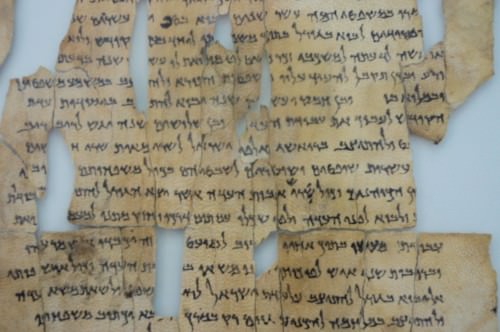
Dead Sea Scrolls
CONCLUSION
The Book of Amos is one of the oldest complete books of ancient prophetic writing, one of the books of the biblical canon, and has attracted the attention of innumerable theologians, historians, and commentators. Besides the prophetic genre, the Book of Amos has shown itself to be useful in a variety of ways, as theologians and historians have used the work to discuss and analyze the history of the composition of the biblical texts, the understanding of the minor prophetic books of the Bible, and recently, even the exodus out of Egypt itself. It is no doubt illuminating to both readers, enthusiasts and critics to see how some of the ancient Israelites like Amos regarded morality and evil and how their fellow Israelites and brethren were behaving.For these reasons, one may see there is little surprise as to why Amos became one of the most widely distributed books of its time.
Female Physicians in Ancient Egypt › Origins
Ancient Civilizations
A famous story from Greece relates how a young woman named Agnodice wished to become a doctor in Athens but found this forbidden. In fact, a woman practicing medicine in Athens in the 4th century BCE faced the death penalty. Refusing to give up on her dreams, she traveled to Alexandria where women were routinely allowed in the medical profession. Once she had received her training, she returned to Athens to practice but did so disguised as a man. When she was found to be a woman 'pretending' to be a doctor she was brought to trial charged with a capital crime until she was saved by her female patients who stormed the proceedings and shamed the prosecuting males into releasing her.
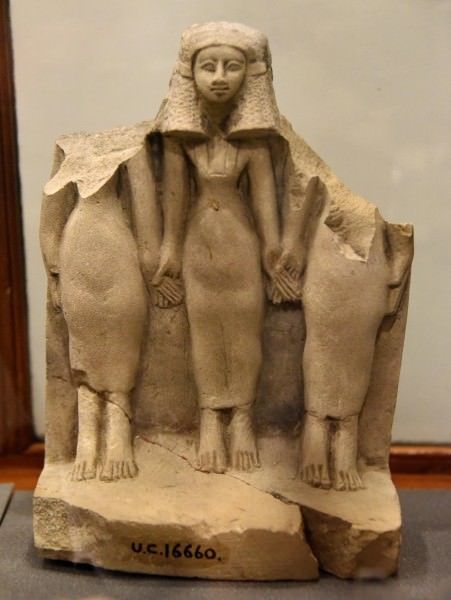
Statuette of a triad of women from Egypt
Following Agnodice's trial, the laws were changed in Athens so women could now practice medicine, but by this time, female physicians were known in Egypt for centuries. The evidence for women in the medical field in Egypt, however, has been largely ignored by historians for the past century. Even so eminent an Egyptologist as Barbara Watterson claims that physicians in Egypt "were all, with one or two exceptions, male" (46). This claim, and others like it, flatly ignores evidence of women in the medical profession going back to the Early Dynastic Period in Egypt (c. 3150 - c. 2613 BCE) when Merit-Ptah was the royal court's chief physician c. 2700 BCE. Merit-Ptah is the first female doctor known by name in world history, but evidence suggests a medical school at the Temple of Neith in Sais (a city in Lower Egypt) run by a woman whose name is unknown c. 3000 BCE.
EGYPTIAN VALUE OF THE FEMININE
Female physicians do not appear in Egyptian history as frequently as males, and there is no doubt that men dominated the medical field. This does not mean, however, that there were no female doctors nor should it seem at all strange to find women in the medical profession in ancient Egypt. Women were highly respected throughout Egypt's history, and feminine symbols appear early. Scholars identify the symbol of the tjet or tyet (also known as 'The Knot of Isis ' or 'Blood of Isis' and dating from the Old Kingdom (c. 2613 - c. 2181 BCE) as the feminine counterpart to the ankh (dating from the Early Dynastic Period), and many of the major deities of the Egyptian Pantheon were female.
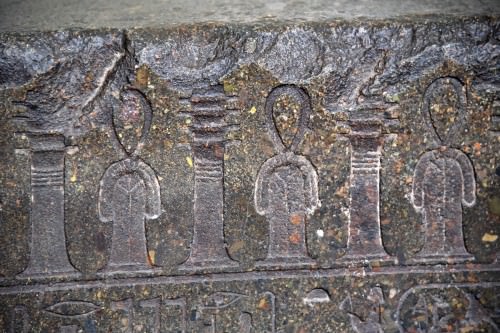
Djed & Tyet
Neith is one of the most ancient goddesses in the world and among the earliest worshiped in Egypt. She is associated with creation in some myths and with the invention of birth as well as being linked with war, death, and the afterlife. One of the most popular and influential myths of Egypt is the story of Osiris and Isis in which Isis plays the dominant role. The goddess Hathor, presiding over joy, festivities, fertility, and many other bright aspects of life, was worshiped by both sexes as was Bastet, keeper of the hearth, home, and women's secrets. Of the four deities most commonly associated with healing ( Heka, Sekhmet, Serket, and Nefertum) two are female. The god Sobek, though also linked with healing, was more closely associated only with the aspects of surgery. The deity who presided over writing was the goddess Seshat, who was also the librarian of the gods. The recurring motif of the Distant Goddess in Egyptian myth, in which transformation is realized, is obviously associated with the feminine, and goddesses such as Qebhet and Nephthys play important roles in the mortuary rituals and the afterlife. The most important cultural value of Egyptian civilization was harmony and balance, symbolized by the goddess Ma'at and her white ostrich feather.
Egyptian culture is infused with feminine power and women were accorded almost equal rights and standing. Women could own land, initiate divorce, own businesses, and become priestesses and scribes. Doctors were all scribes, one of the most respected and affluent of the social classes, though not all scribes became doctors. Even though there persist scholars in the present day who claim women were not allowed to become scribes, the established female presence in the medical profession - as well as other evidence - argues otherwise. Doctors needed to be able to read the medical texts and spells as well as write them in order to care for their patients who were prone to a variety of illnesses.
DISEASE & TREATMENT
The ancient Egyptians suffered from many of the same maladies as people in the present day. Egyptologist Joyce Tylldelsy writes:
The idyllic scenes which decorate many tomb walls give the impression that the Egyptians were a fit and healthy race untroubled by sickness. This impression is flatly contradicted by the medical evidence which indicates a population at the mercy of a wide variety of debilitating and life-threatening diseases...Even less serious-sounding afflictions such as diarrhoea, coughs, and cuts could prove fatal without modern medicines, while the majority of the population suffered intermittently from painful rheumatoid joints and badly abcessed teeth. (31)
Doctors treated physical injury with straightforward methods of bandaging wounds and setting broken bones, but disease was more difficult to diagnose. Sickness was considered a punishment sent by the gods, an attack by an angered ghost or demon, a trial through which one should learn a lesson, or a manifestation of some evil spirit.
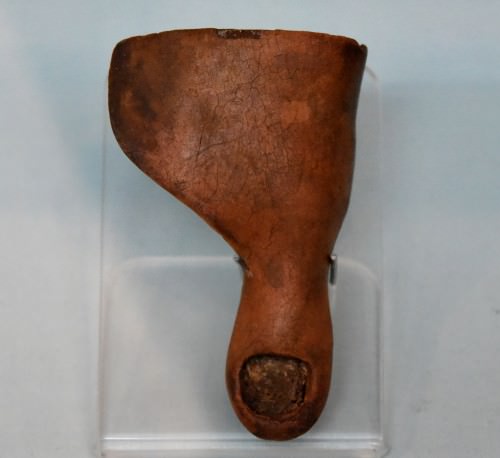
Prosthetic Toe of Painted Cartonnage
These supernatural forces were thought to result in a number of illnesses which could be cured by magic spells, rites, and incantations, but this did not mean the doctor had the ability to banish disease entirely. The supernatural world was beyond any mortal's control, and all a doctor could do was treat each individual case as it presented. According to Barbara Watterson, Egyptian doctors were originally 'magicians' who dealt primarily with the supernatural but eventually came to combine empirical observation and technique with magic spells. Egyptologist Rosalie David comments on this, writing:
Doctors were specialized priests who had originally acted as religious mediators between the god and the patient but, over the centuries, they acquired detailed medical knowledge and experience. Even as early as the Old Kingdom, the medical profession appears to have been highly organized and incorporated rational as well as magical treatment of patients. Little is known of the medical training and whether it was entirely practical or whether the students had to pass examinations. The temples appear to have played an important part both in medical training and the healing of patients. The "House of Life" was an area of the temple that, as a center of documentation where sacred papyri were written or copied, may also have been used as a teaching center for medical students. (336)
The House of Life was also considered the medical knowledge the individual doctors had acquired and carried with them.These physicians often operated out of the temple complex and, just as often, made house calls. Many of these doctors are known by name and some of them were women.
MERIT-PTAH & PESEHET
The Egyptians were famous as skilled healers as early as 800 BCE, and women were already associated with the art. In Homer 's Odyssey, Polydamna, "wife of Thon, a woman of Egypt," gives Helen the drug that "banishes all care, sorrow, and ill-humor," and it is further noted in the same passage that everyone in Egypt is a skilled physician (IV.228). The 'first physician' of the Early Dynastic Period/ Old Kingdom of Egypt was the architect Imhotep (c. 2667-2600 BCE), best known for creating Djoser 's Step Pyramid and his medical works arguing for disease as a natural occurrence, not a punishment from the gods.He was later deified as a god of healing and medicine. Two women from around his same time were also noted for their medical practice and achievements, even though today they seem the most famous Egyptian doctors no one has ever heard of.
MERIT-PTAH IS NOT ONLY THE FIRST FEMALE DOCTOR KNOWN BY NAME BUT THE FIRST WOMAN MENTIONED IN THE STUDY OF SCIENCE.
The first female physician in Egyptian history, as noted above, is Merit-Ptah ('Beloved of Ptah') who lived c. 2700 BCE toward the end of the Early Dynastic Period. She was not the only woman of note from this time as the Queen Merneith (c. 2900 BCE) definitely ruled as regent and possibly on her own. Merit-Ptah is not only the first female doctor known by name but the first woman mentioned in the study of science. Her inscription, left by her son, was found on a tomb at Saqqara naming her 'Chief Physician' a position which would have made her a teacher and supervisor of males. As chief physician, she would have also attended the king, but exactly which king is uncertain because the 2nd Dynasty records are poorly preserved.
Pesehet (c. 2500 BCE) was known as 'Lady Overseer of Female Physicians' and may have been associated with the temple-school at Sais. She has also been cited as the first female doctor known by name, but it is unclear whether she was best known as a practicing physician or a teacher. Pesehet is referred to in inscriptions as the 'King's Associate,' which suggests she was the personal physician of the monarch. She is also associated with the training of midwives, one of the few references to such training in Egyptian history. All of the information about her comes from her stela at Giza, and though this is scant, it does establish Pesehet as a medical practitioner and also makes clear there were other female physicians practicing at the time whom she supervised or trained.

Egyptian Woman Giving Birth
Pesehet would have lived and worked during the 4th Dynasty in the period of the Old Kingdom. During this time, the central government was strong and kept careful records as well as correspondence, but there is no mention of Pesehet in any of them. This is not surprising, however, since there is little mention, by name, of any physicians, female or male. After Pesehet, no women are cited as practicing physicians again until the Ptolemaic Period (323-30 BCE), but this is not to say there were none. Midwives also cease to be mentioned after the Old Kingdom, but it is clear their position continued and was considered quite important.
WOMEN IN THE MEDICAL FIELD
In the medical field, women are mentioned as nurses and depicted as midwives. Males and females were nurses who assisted the doctors in procedures. Nurses also played an important role in the life of the king. Egyptologist Carolyn Graves-Brown writes:
In the New Kingdom, at least, the royal nurse was an important person, being so close to the king. Despite the fact that women's occupations are rarely shown in the tombs of their male relatives, tomb owners often show their female relatives in the role of nurses to the king. Hatshepsut 's nurse, Sitre, was important enough to be buried near her queen. Nurses also seem to have been held in high regard by the non-royal elite, as they are shown in private tomb chapels and on stelae with the family. (83)
Queen Hatshepsut (1479-1458 BCE) founded medical schools and encouraged women to pursue medicine. Other New Kingdom queens are also thought to have encouraged the same, notably Queen Tiye (1398-1338 BCE) and Nefertiti (c. 1370- c. 1336 BCE), both of whom are noted for their social programs. As far as any official record is concerned, however, there is no evidence for this. Aside from the position of nurse, women in medicine are recorded as midwives and wet nurses.
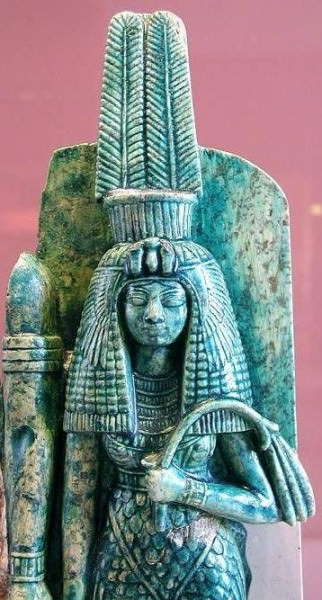
Queen Tiye
The wet nurse was an especially important role considering the high mortality rate of women in childbirth. Legal documents establish agreements between women and expectant parents to care for the newborn should the mother die. Graves-Brown notes how these agreements "stipulate that a wet nurse was to have a trial run before being hired; she was obliged to provide milk of a suitable quality, not to nurse any other children, and not to fall pregnant or enter into sexual activity" (83). In return, the employer would pay the nurse and also provide oil for use in massaging the newborn child.
THE PTOLEMAIC PERIOD & LATER
Legend links Queen Cleopatra VII (69-30 BCE) with the medical profession as the author of a book on the subject; most likely, however, she simply continued the policies of earlier queens such as Hatshepsut and sponsored such works. Her name has been linked to the famous Roman physician Galen (126 - c. 216 CE), who lived long after her, and this is because of another, lesser-known, Cleopatra.
This other Cleopatra is regularly referenced as living c. 2nd century CE, but it seems clear she lived earlier, probably during the Ptolemaic Period, and was cited in works from the later time. This Cleopatra was known for authoring a book on obstetrics which was regularly consulted by doctors, including Galen. It is probable that later writers confused the physician Cleopatra with the monarch but also possible they knew of the queen's involvement in medical matters better than later historians who wrote on her. Scholar Okasha El Daly comments on this, writing:
It may have been the fame of Queen Cleopatra, either as an author of medical books or due to her patronage of such works which Galen consulted, that gave rise to this claim in Arab sources of a connection between him and Cleopatra as his teacher. (115)
Women in Egypt continued to exercise authority in medicine and the sciences until the triumph of Christianity in the country in the 4th century CE. The clearest evidence of this is seen in the life of Hypatia of Alexandria (c. 370-415 CE), the philosopher who instructed her largely male students in philosophy and science until she was murdered by a Christian mob.
The claim that there were no women, or only a few, involved in medicine in ancient Egypt is untenable and does not accord with the values of the civilization. By this reasoning, there were no women involved in anything of note anywhere in the world until the modern era because history books make no mention of their contributions. This point is made clear in Virginia Woolf's brilliant essay Shakespeare's Sister from A Room of One's Own in which she imagines the life of the playwright's equally gifted sister in a society which did not value women. Although Elizabethan England was ruled by a queen, opportunities for women of the time were few; unlike in ancient Egypt. Female physicians' names may be largely missing from Egypt's historical record, but this same can be said for most of recorded history. Unlike the histories of other cultures, however, it is clear that women in Egypt could hold positions of importance and respect and further that a number of them did.
See other Related Content for Ancient History ››
LICENSE
Article based on information obtained from these sources:with permission from the Website Ancient History Encyclopedia
Content is available under License Creative Commons: Attribution-NonCommercial-ShareAlike 3.0 Unported. CC-BY-NC-SA License